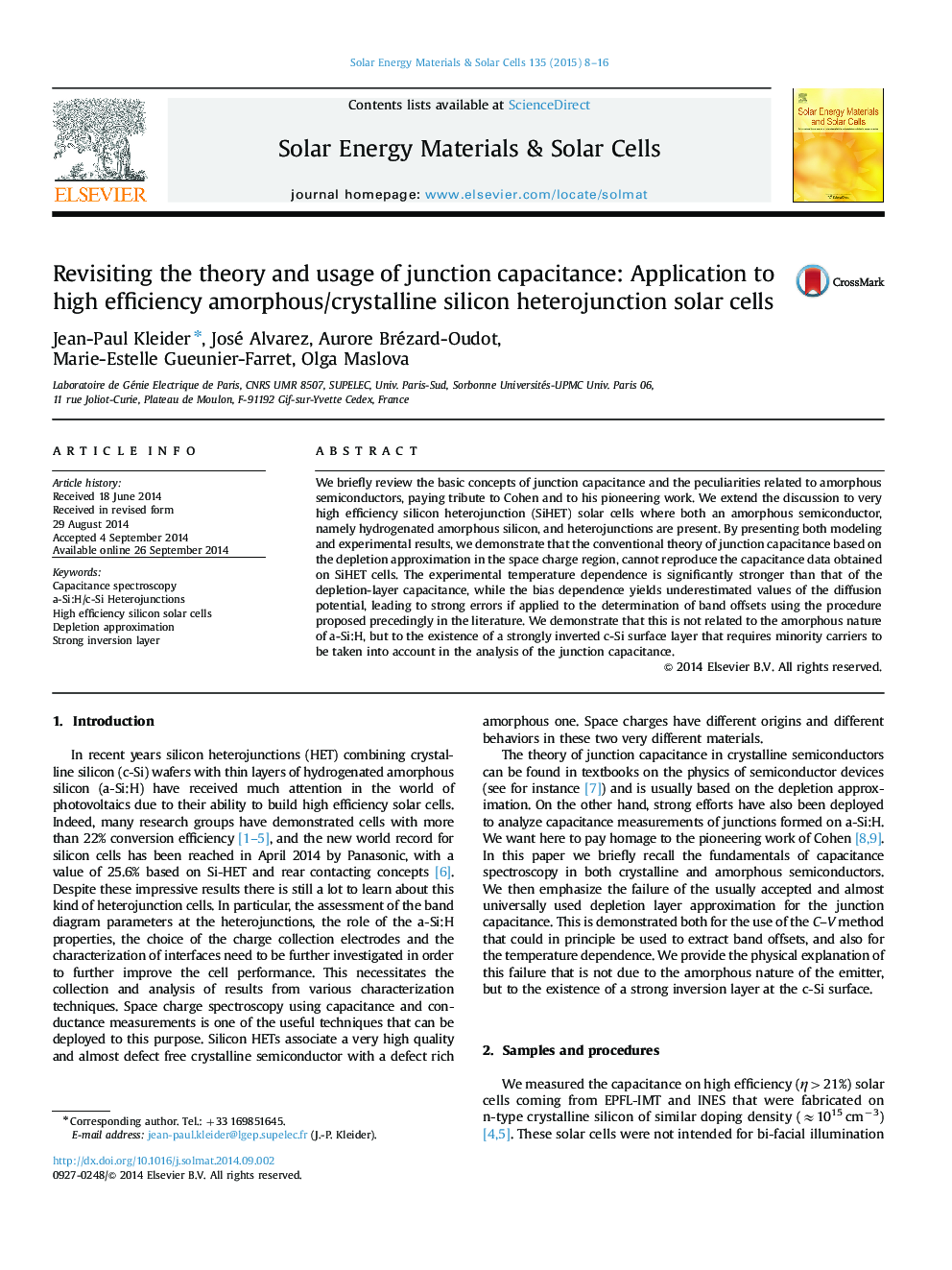| Article ID | Journal | Published Year | Pages | File Type |
|---|---|---|---|---|
| 6535235 | Solar Energy Materials and Solar Cells | 2015 | 9 Pages |
Abstract
We briefly review the basic concepts of junction capacitance and the peculiarities related to amorphous semiconductors, paying tribute to Cohen and to his pioneering work. We extend the discussion to very high efficiency silicon heterojunction (SiHET) solar cells where both an amorphous semiconductor, namely hydrogenated amorphous silicon, and heterojunctions are present. By presenting both modeling and experimental results, we demonstrate that the conventional theory of junction capacitance based on the depletion approximation in the space charge region, cannot reproduce the capacitance data obtained on SiHET cells. The experimental temperature dependence is significantly stronger than that of the depletion-layer capacitance, while the bias dependence yields underestimated values of the diffusion potential, leading to strong errors if applied to the determination of band offsets using the procedure proposed precedingly in the literature. We demonstrate that this is not related to the amorphous nature of a-Si:H, but to the existence of a strongly inverted c-Si surface layer that requires minority carriers to be taken into account in the analysis of the junction capacitance.
Keywords
Related Topics
Physical Sciences and Engineering
Chemical Engineering
Catalysis
Authors
Jean-Paul Kleider, José Alvarez, Aurore Brézard-Oudot, Marie-Estelle Gueunier-Farret, Olga Maslova,
